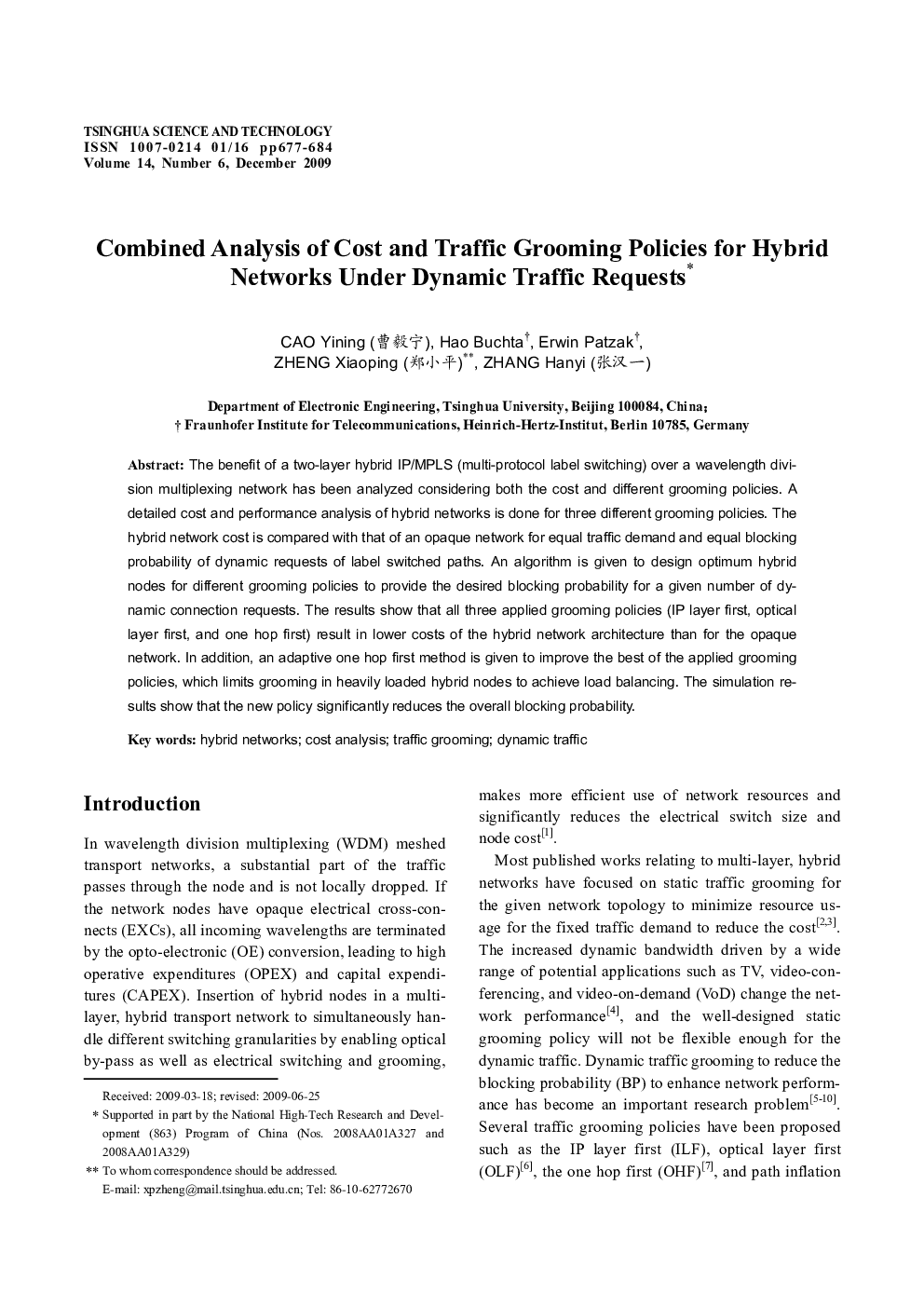| Article ID | Journal | Published Year | Pages | File Type |
|---|---|---|---|---|
| 865425 | Tsinghua Science & Technology | 2009 | 8 Pages |
Abstract
The benefit of a two-layer hybrid IP/MPLS (multi-protocol label switching) over a wavelength division multiplexing network has been analyzed considering both the cost and different grooming policies. A detailed cost and performance analysis of hybrid networks is done for three different grooming policies. The hybrid network cost is compared with that of an opaque network for equal traffic demand and equal blocking probability of dynamic requests of label switched paths. An algorithm is given to design optimum hybrid nodes for different grooming policies to provide the desired blocking probability for a given number of dynamic connection requests. The results show that all three applied grooming policies (IP layer first, optical layer first, and one hop first) result in lower costs of the hybrid network architecture than for the opaque network. In addition, an adaptive one hop first method is given to improve the best of the applied grooming policies, which limits grooming in heavily loaded hybrid nodes to achieve load balancing. The simulation results show that the new policy significantly reduces the overall blocking probability.
Related Topics
Physical Sciences and Engineering
Engineering
Engineering (General)
Authors
Cao (æ¹æ¯
å®), Hao Buchta, Erwin Patzak, Zheng (éå°å¹³), Zhang (å¼ æ±ä¸),
